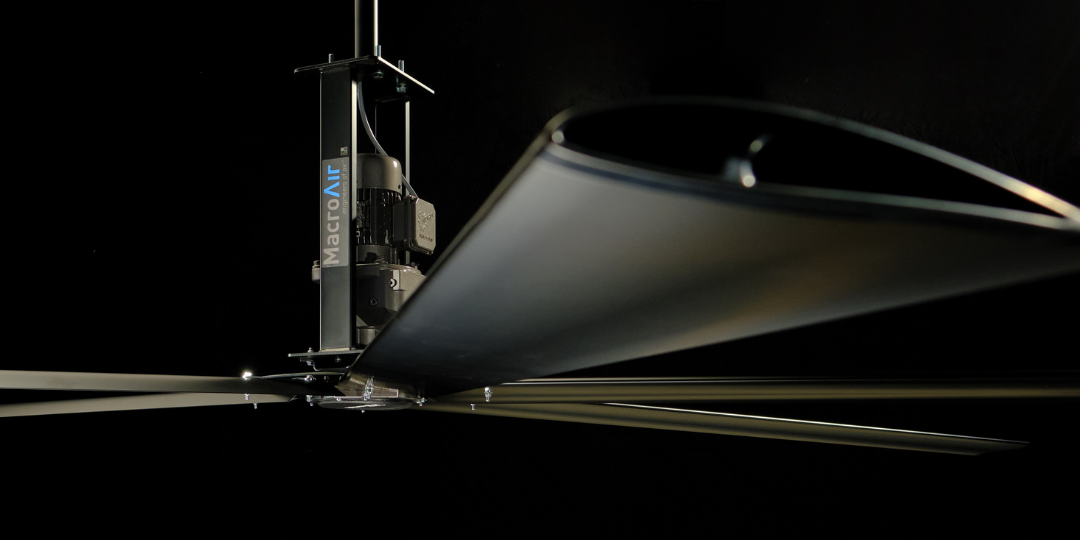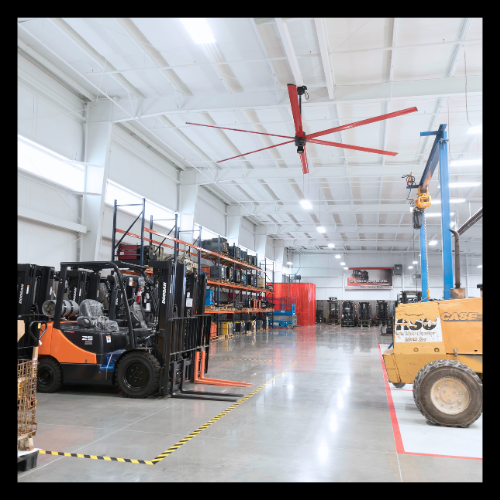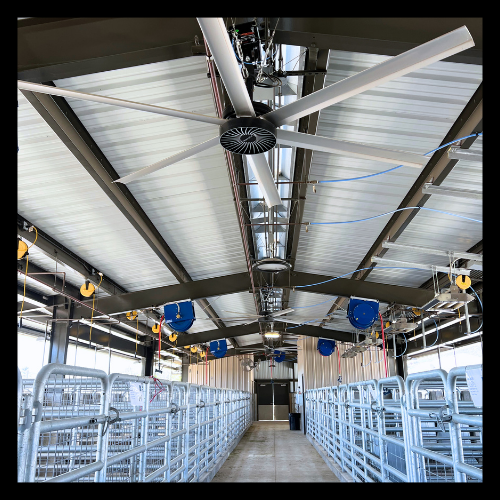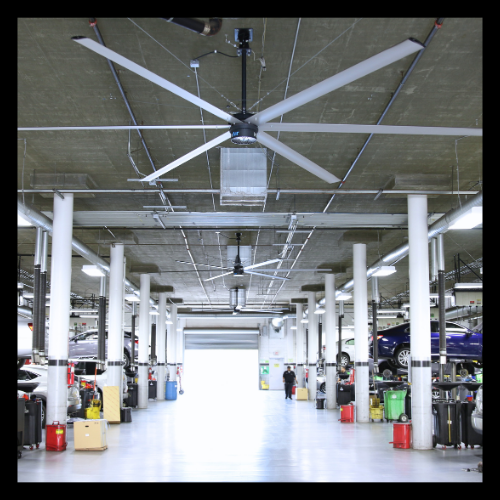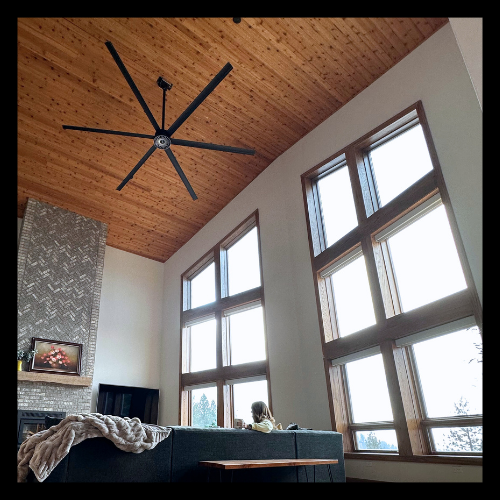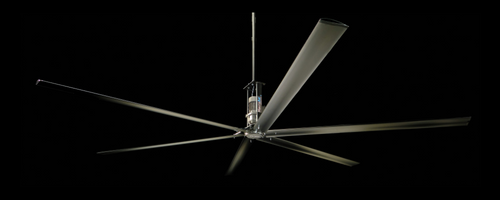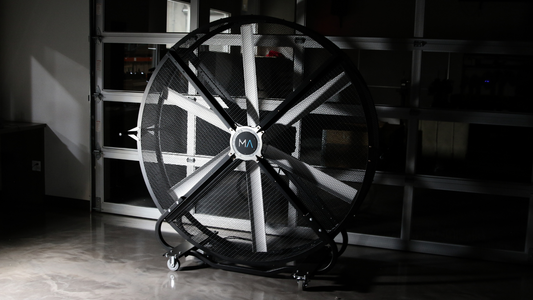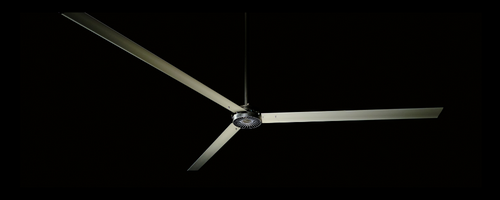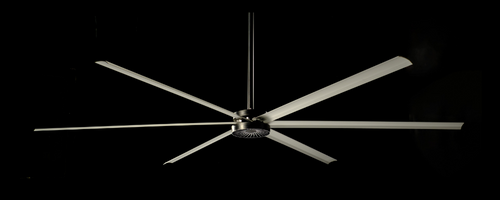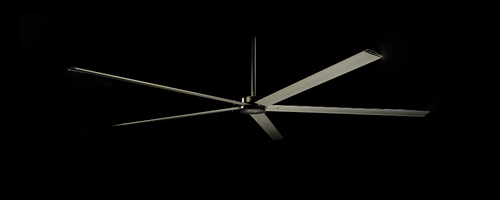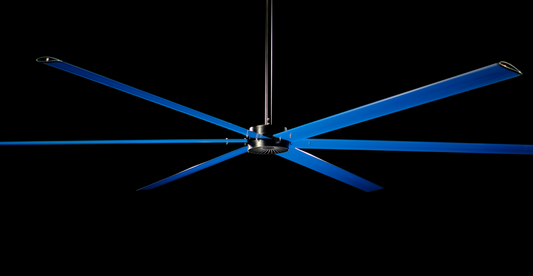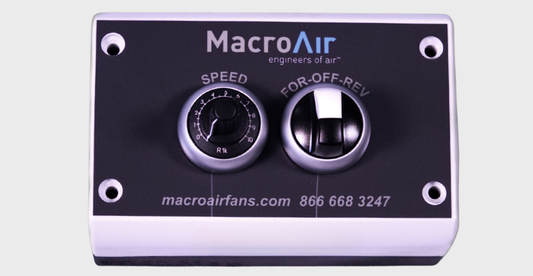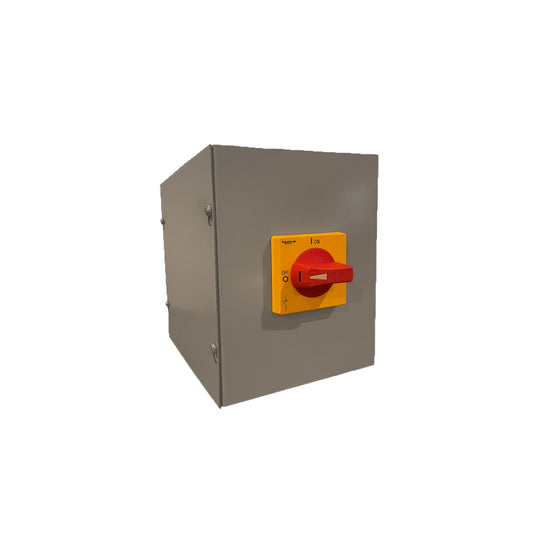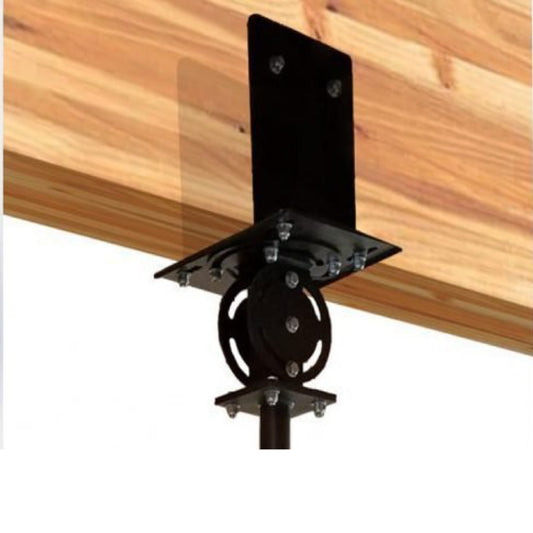What Are HVLS Fans?
HVLS Fans 101
What are HVLS Fans?
HVLS fans, short for High Volume Low Speed fans, are large ceiling fans specially designed for big industrial and commercial spaces, along with large homes and outdoor spaces. Industrial HVLS fans are known for their excellent energy efficiency.
How do HVLS fans work?
The slow speed from an HVLS fan creates a powerful, yet gentle, breeze moving large amounts of air down and out around the room, leaving people feeling up to 15 degrees cooler.
History of HVLS Fans
In the early 1990s, the University of California-Riverside needed a solution to efficiently cool dairy cattle. That’s when Walter Boyd and his son, Eddie, started their research and development of the world’s first high volume, low speed (HVLS) fan. In 1998, production and manufacturing began.
When you invest in a MacroAir HVLS fan, you don’t get just any industrial ceiling fan; you get one of the most cost-effective, beautiful, and powerful HVLS fans on the market today.
Types of HVLS fans
MacroAir HVLS fans are available in both direct drive and gear drive. Direct drive motors use a series of magnets to move the fan making them ultra efficient and quiet. Gear drive motors use gears to move the fan making them durable and tough for even the harshest environmental conditions.
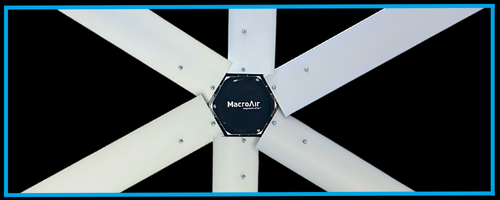
Sizes of HVLS Fans
Different manufacturers offer different pricing, so be sure to do your research. It is important to factor in all additional costs associated with purchasing, shipping, and installing an HVLS fan. Also, remember the cost-saving benefits of lower energy consumption and cost-efficient fan operation.
HVLS Fans vs Traditional Ceiling Fans
HVLS fans are engineered for large, open spaces like warehouses intended for industrial use. Traditional fans are typically not equipped to handle the airflow requirements of extremely large, industrial environments. Their higher velocity also may result in accelerated wear and tear. HVLS fans, on the other hand, move a significant volume of air at a low speed, reducing strain on the motor and ensuring longevity and efficiency.
How Much Do HVLS Fans Cost?
Different manufacturers offer different pricing, so be sure to do your research. It is important to factor in all additional costs associated with purchasing, shipping, and installing an HVLS fan. Also, remember the cost-saving benefits of lower energy consumption and cost-efficient fan operation.
Benefits of HVLS Fans
HVLS Industry Applications
Factors to Consider When Choosing an HVLS Fan
Performance
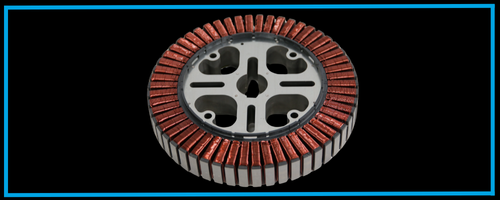
Airflow Capacity
When it comes to the airflow capacity of HVLS fans, consider the horsepower, area of coverage, and speed.
Blade Design
Evaluate the fan's blade profile and material to ensure optimal airflow and efficiency.
Size

Diameter
Choose a fan size appropriate for your space's dimensions and to ensure complete airflow coverage and distribution.
Clearance
Consider the distance from the ceiling, floor, and wall, obstructions like beams, racks, lights, and sprinklers, as well as building codes, fire safety, and national standards.
Controls

Automation and Integration
Select control systems compatible with automation protocols and sensors for seamless integration into your facility Building Management System.
Type of Facility
Do the research and know the options available from the manufacturer. Choose controls with an intuitive interface suitable for the facility type.
Noise

Decibel Level
Check the fan's decibel rating to ensure it meets the needs for quiet operation, especially in noise-sensitive environments.
Motor Type
HVLS fans are built with direct drive or gear drive motors. Direct Drive motors use a series of magnets to move the fan and run quietly. Gear drive fans use gears to move the fan, which tend to be louder. Consider the needs of your space.
Mount

Ceiling Structure
Evaluate the ceiling's structural integrity and type of beam to ensure it supports the weight and installation requirements of the HVLS fan and to identify the type of mounting system necessary for the installation.
Safety Features
Look for safety systems and safety cables to enhance stability and prevent accidents during operation.
Durability

Warranty
Check the manufacturer's warranty to ensure coverage for potential defects or malfunctions, providing peace of mind regarding the fan's longevity.
Materials
Look for fans made from durable materials like anodized aluminum to withstand long-term use and environmental conditions.
HVLS Installation
Consider hiring professionals for HVLS fan installation and wiring. Most issues with fan performance are due to faulty installation. Warranty may be void if the fan is installed incorrectly. Check with the fan manufacturer for installation options.
HVLS Fans In Action
HVLS Fans for Any Application
-
AirVolution
Online Price Starting At $6,450.00 USDOnline PriceUnit price per -
Controller 4
Online Price Starting At $935.00 USDOnline PriceUnit price per -
Controller: Analog Remote
Online Price $299.00 USDOnline PriceUnit price per -
Disconnect Switch for AVD3 and AVD370
Online Price $170.00 USDOnline PriceUnit price per -
Glulam Bracket
Online Price $70.00 USDOnline PriceUnit price per
Additional Questions or Not Sure What Fan is Right For You?
We're here to help! Contact us below and we'll get back to you ASAP.
HVLS Fan Resources
-
How Can HVLS Fans Benefit Me?
HVLS Fans BenefitsHVLS fans provide both economic and comfort benefits. Learn more about how a fan can help you.
-
HVLS Fans Masterclass
HVLS FansTransform your space with MacroAir® HVLS fans: cool by 8°-15°, cut energy costs by up to 30% across diverse industries.

